Bringing slow cargo back to the Hudson
For a post-carbon future, how about resurrecting a historic industry of river-borne commerce propelled by the wind?
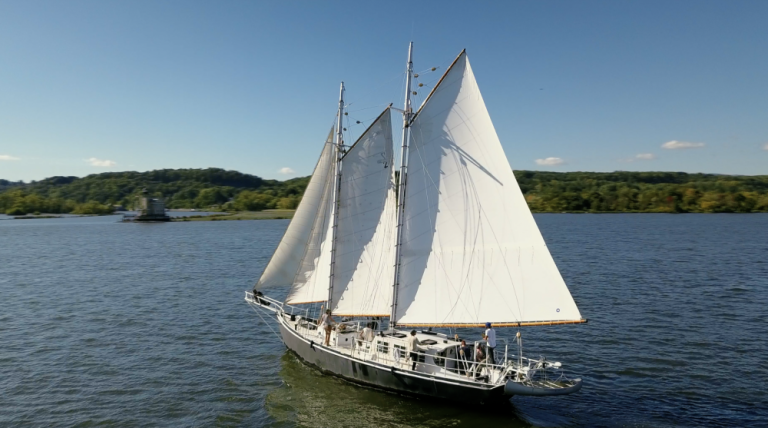
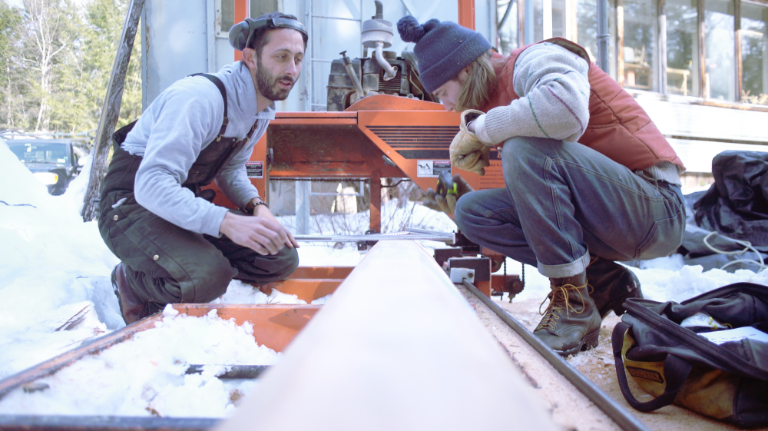
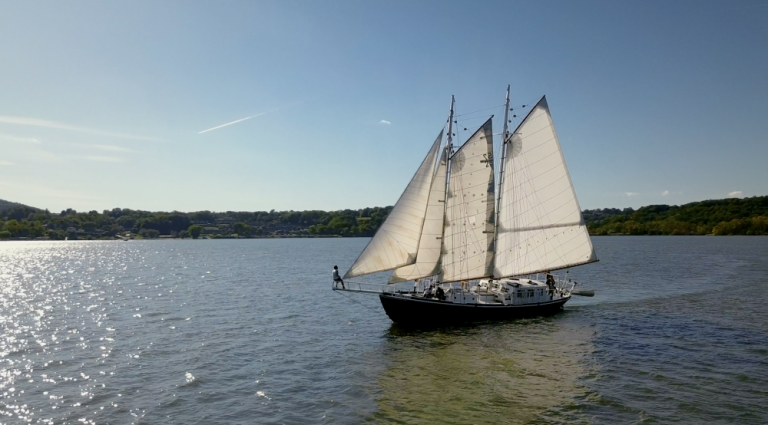
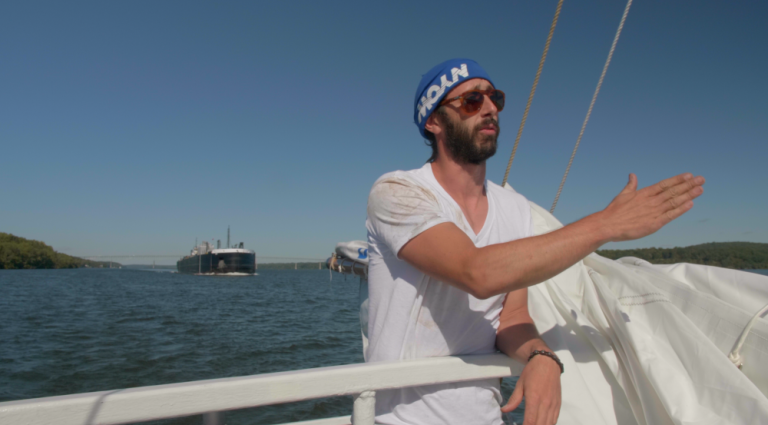
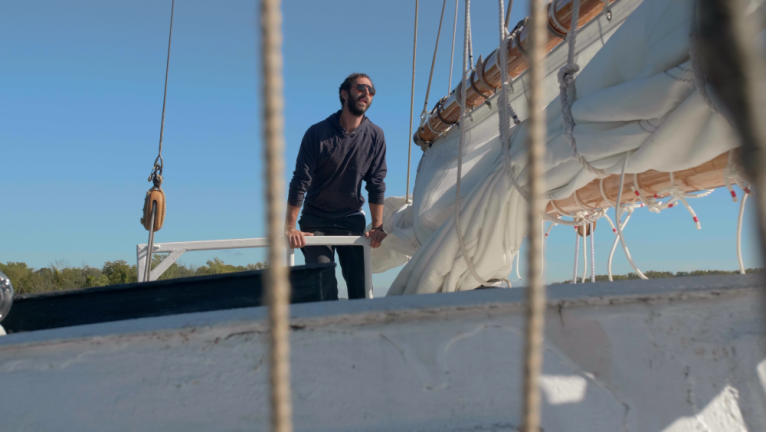
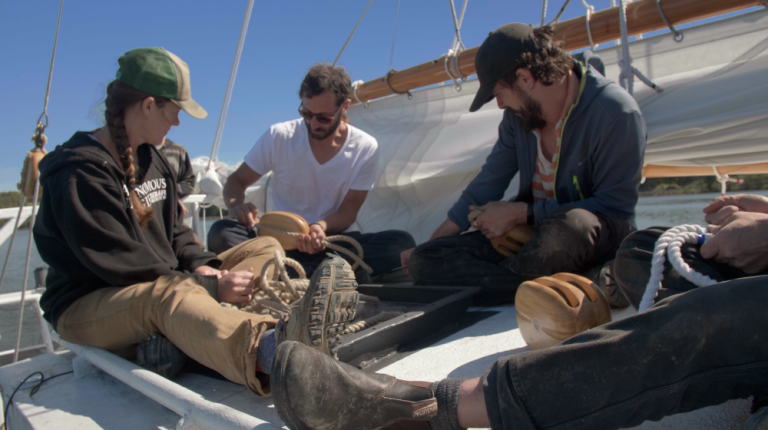
Apollonia. Meaning belonging to the Greek god Apollo, patron and protector of sailors. Docked alongside the pier at the Riverport Wooden Boat School in Kingston, sailors make finishing touches to the schooner bearing the name, a dream seven years in the making. I met with Sam Merrett, captain and founder of the venture, at the boat in May.
Another ship, another time: the 36-foot barge Ceres, named for the Roman god of agriculture, makes her maiden voyage down the Hudson from the eastern shore of Lake Champlain in 2013. The ship is laden with nonperishable produce from Vermont farms, including beans, popcorn, potatoes and rice – yes, rice – from the boat builder’s own farm. Erik Andrus, the farmer growing rice in hardiness zone 5, had taken on another extraordinary project, the first sail freight on the Hudson in the 21st century. Sam Merrett, a founder of the Hudson Sloop Club, an organization dedicated to connecting a new generation to the waterfront, witnesses the voyage. The encounter spurs an epiphany, launching Merrett’s own sail freight vision.
Merrett had come to Hudson at the turn of the last decade to create a new headquarters for Full Circle Fuels, a company that converts diesel engines engines to run on SVO (straight vegetable oil). “The fuel of the present,” Merrett calls it. For our current transportation network, it is the least environmentally damaging, especially since it can usually be obtained as a restaurant waste product.
But for a post-carbon future? How about resurrecting a historic industry of river-borne commerce propelled by the wind?
In that past Age of Sail, the city of Hudson had a North and South bay, in which the river’s 1,200 working ships could anchor. Today’s shoreline is a remnant of that bustling port: Amtrak’s rail line built atop riprap off shore, cutting off those harbors, which have filled with sediment and become marshy. And those vessels? Gone with nary a trace. Andrus built Ceres from scratch in a barn on his farm. The other path would be to find a recreational boat to reclassify. That was the path that Merrett started down.
In the two years it took Merrett to track down his dream boat, Ceres would journey up and down the river to great acclaim (including a stop at my former employer, New Amsterdam Market in lower Manhattan) and multiple difficulties. Most of these were overcome, from amateur boatbuilding failings and finagling affordable insurance for this unique venture, to the logistics of finding warehouses and distribution in a food system built for trucks. But what eventually sank the project (although not the boat!) was the failure of a permanent crew to coalesce and take the wheel. In 2015, Andrus turned his full attention back to his rice paddies.
But not before he’d lit a flame in Merrett, who with the help of yacht broker found a listing on Craigslist for a 72-year-old steel hulled schooner north of Boston. She was going for $15,000, down from an original price of $200,000. The catch? She was on “the hard” inland, laid up for 30 years in a backyard in what had developed into dense suburbia. With a 15-foot beam, she was an oversized load for the road between her and the boatyard in Buzzards Bay, MA, where restoration work would begin. The logistics involved had dissuaded every other buyer. But Merrett would not be deterred, even by the prospect of towing a 64-foot steel hulled schooner over 70 miles of road festooned with power lines. He ended up cutting off protrusions on deck and creating PVC pipe ‘ramps’ for power lines to glide over others.
It took the rest of that year to get Apollonia to Buzzards Bay, make her shipshape and cruise back to Hudson under power. The five years that followed included replacing everything above deck – she had been lacking masts, sails, and rigging – with the help of volunteers and partners on both sides of the river. Luckily, Mystic Seaport had the ship’s original rigging plans. Half-finished booms and gaffs were found from an old canceled project at Scarano Boat Building in Albany. Sails from larger vessels were recut. In 2019, the masts were stepped, custom-sewn sails raised and the boat sailed out onto the Hudson River on its maiden voyage, unaided by a motor.
Bald-headed (lacking topsails) and gaff-rigged (a simple sail configuration that can be tended by a smaller crew), the two-masted boat is big enough to carry 10 tons of cargo, yet small enough to access what remains of the infrastructure at river towns up and down the Hudson. Its diesel engine from the 1950s, which Merrett whipped back into shape and is converting to run on used vegetable oil, will assist navigation in tight spots and when the wind is lacking.
On a sunny day in May, the project’s members prepped one of the last construction projects: the cutting of a cargo hatch amidships out of the steel deck. In her old life as a Baltimore doctor’s yacht, provisions were brought aboard by hand. With the new hatch and cargo gear for the boom, containers alongside the dock can now be swung over and lowered.
Numerous clients have stepped forward to work with Apollonia. Nine Pin Cider Works in Albany is an ideal partner, located just a mile from a dock on a bike path. Cargo trikes will bring the hard cider to the dock, where Apollonia’s cargo boom will lift it into the hold and carry it downriver to the largest market on the East Coast. Made entirely from New York State apples, the cider is a perfect candidate for “slow cargo.” It takes time and care to produce, and being nonperishable, does not need to travel at highway speeds burning fossil fuels. After all, a one-way sail down the Hudson only takes three to five days.
For the return voyage north? A sea salt producer in Germantown is interested. Transporting product for them would involve a different method, in which Apollonia would essentially flood its hold, sailing upriver with Atlantic water stored in an inflatable bladder.
“This is not a living-history project, trying to make the past ‘come alive,’” writes Merrett on his website, schoonerapollonia.com. It is an intelligent, reproducible business model that should generate a livable wage for three crew members. He is aiming for $20 an hour, making his outfit an outlier in the world of historic tall ships, where the experience is so enticingly nostalgic that many sailing vessels can get away with paying $9 an hour.
Merrett imagines their success could inspire a new fleet following in Apollonia’s wake, hundreds or even a thousand commercial ships working the river again, perhaps built at the boatbuilding school at the Hudson River Maritime Museum where she is currently docked. After all, in her two years plying these waters, Ceres moved more than onions and potatoes; she moved a man’s mind.